Meet the dragonflies and damselflies found at Gosforth Nature Reserve in 2022, with local naturalist and volunteer, Christopher Wren.
2022 turned out to be another good year for damselflies and dragonflies at Gosforth Nature Reserve.
The season got off to a fairly slow start and although it was a warm dry summer, three of the four days hosting NHSN dragonfly events were cold and grey without a single dragonfly to be seen. Fortunately, the fourth was warm and sunny and the dragonflies put on a great show. Let’s hope for good weather for next year’s events.
As in 2021, 17 species were recorded and they are listed below. The highlight was a single male Willow Emerald Damselfly seen by Philip Jordan. Excitingly, this was a first for the site and the county.
Meet the Species
Damselflies
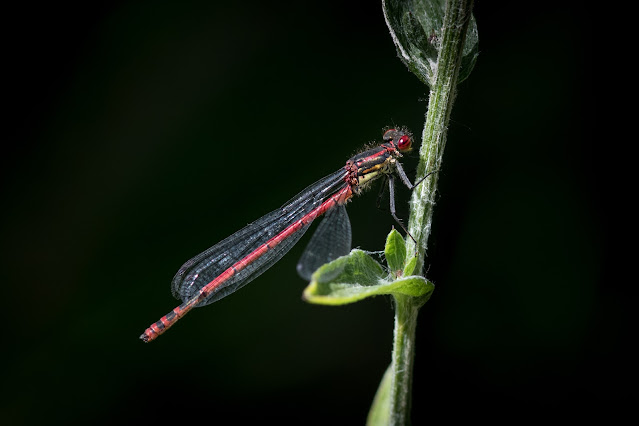
Large Red Damselfly
The season began, as always, with the Large Red Damselfly, first seen on 30th April. This is a mature male.
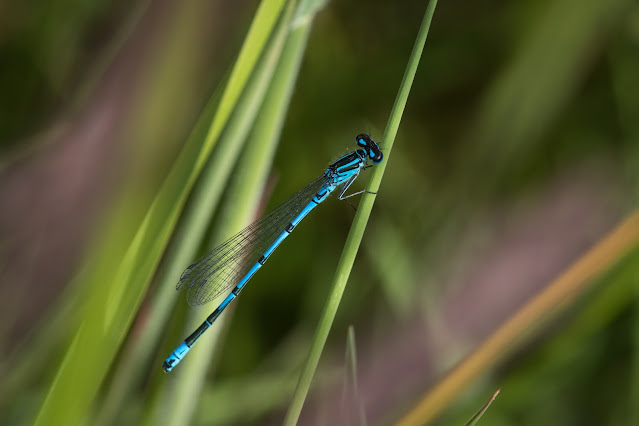
Azure Damselfly
More common than the similar Common Blue (see below) in early summer but with a shorter flight season.
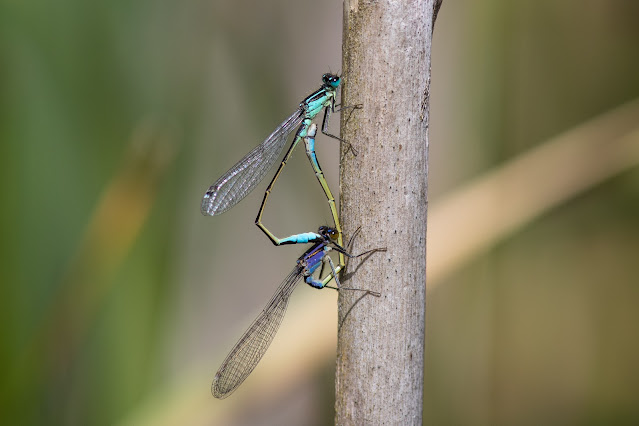
Blue-tailed Damselfly
This damselfly has a long flight season. The females come in many different colours. Males aren’t choosy.
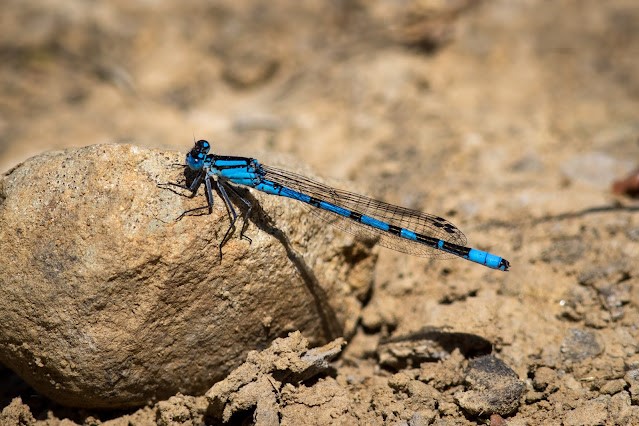
Common Blue Damselfly
Common and blue, as they say, especially later in the summer.
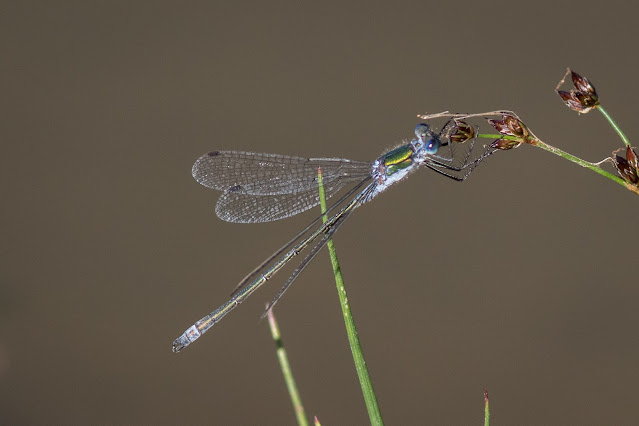
Emerald Damselfly
The latest of our regular damselflies to appear, in the last week of June. This one is a male.
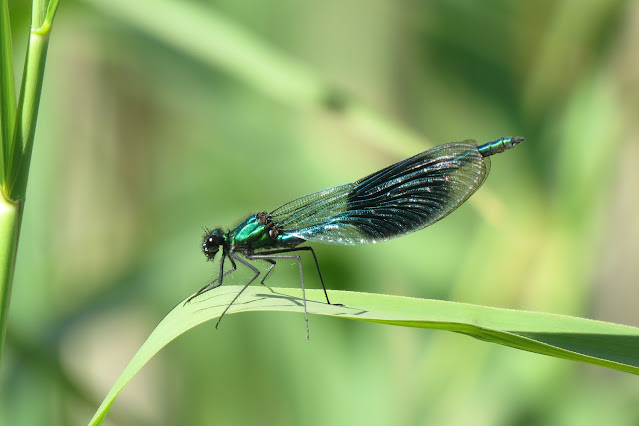
Banded Demoiselle
We usually see one or two males each year. This species breeds in running water so we are presumably seeing dispersing males from the Ouseburn or somewhere similar.
Photo by Philip Jordan.
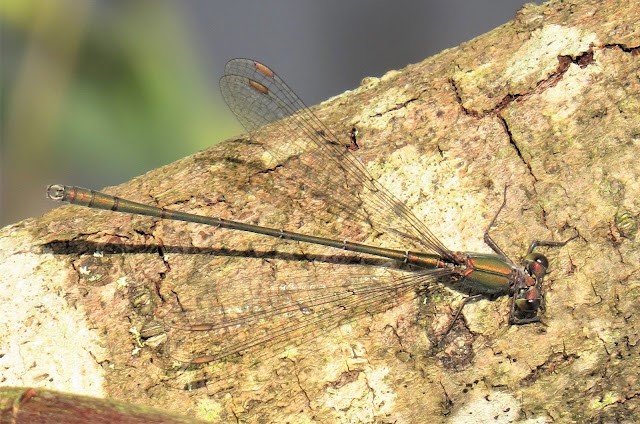
Willow Emerald Damselfly
This damselfly is a recent colonist from continental Europe and has been spreading north and west since arriving in East Anglia in 2009.
The Willow Emerald is a late-season species and is distinguished from the common Emerald by its pale wing-spots and the lack of any blue colouration on the thorax in the male. The female lays eggs in the bark of willow stems overhanging the water. I expect we’ll see breeding females here in the next few years.
Photo by Philip Jordan.
GNR is the most northerly record by 65km, as shown in this distribution map from iRecord.

Dragonflies
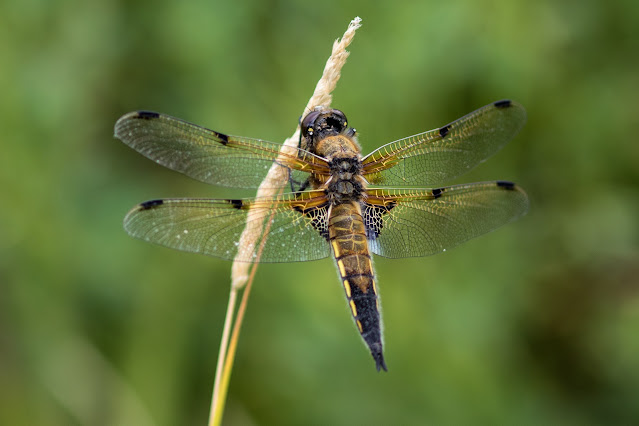
Four-spotted Chaser
The first was seen at the end of May and there were many after that, second only to common darters in abundance. Unlike most other dragonflies, males and females of this species are very similar in appearance.
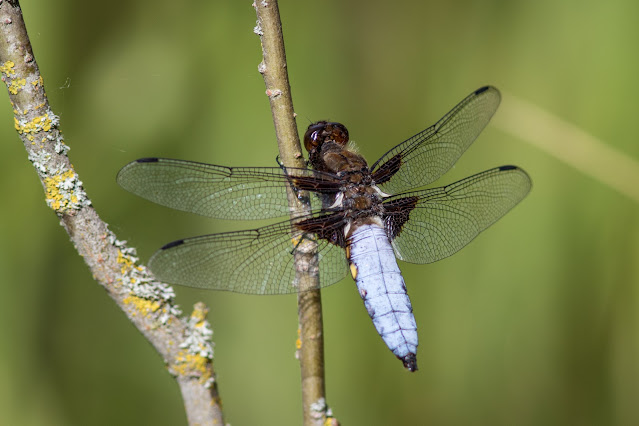
Broad-bodied Chaser
This was a rare species this year with only two sightings of males as far as I am aware.
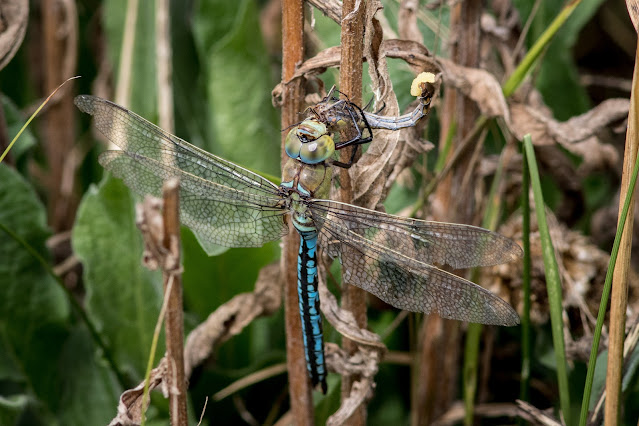
Emperor Dragonfly
Emperors had a good year with lots of males on patrol over both ponds and the lake and plenty of ovipositing females. Their season extended to early September this year. This male is snacking on a female common darter.
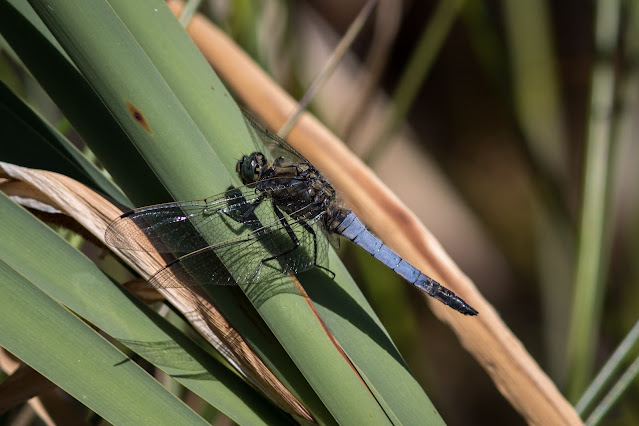
Black-tailed skimmer
This dragonfly has been seen occasionally in recent years. A mature male posed for photos at the Meadow Pond on 7th July but wasn’t seen again.
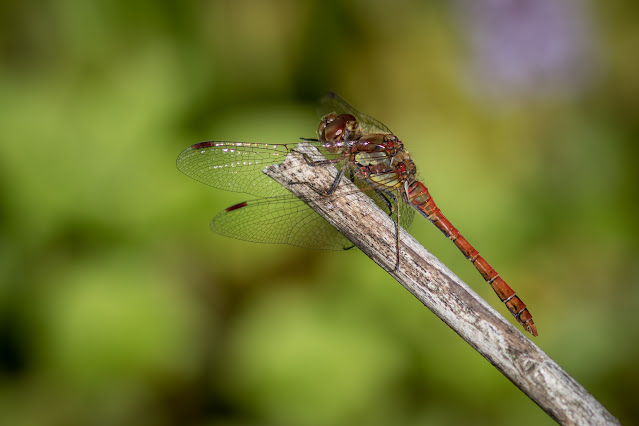
Common Darter
Our most abundant dragonfly and the one with the longest flight season, going on until mid November this year. This is a male.
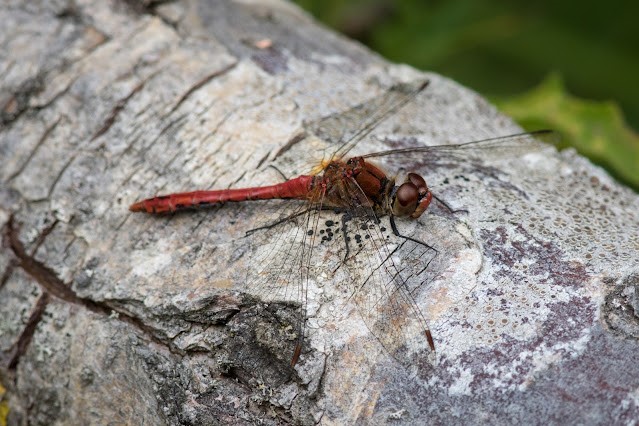
Ruddy Darter
This has been a fairly rare sight recently, perhaps a bit of a surprise as they are more abundant on other local sites. This is a male from this year beside the Heath Pond.
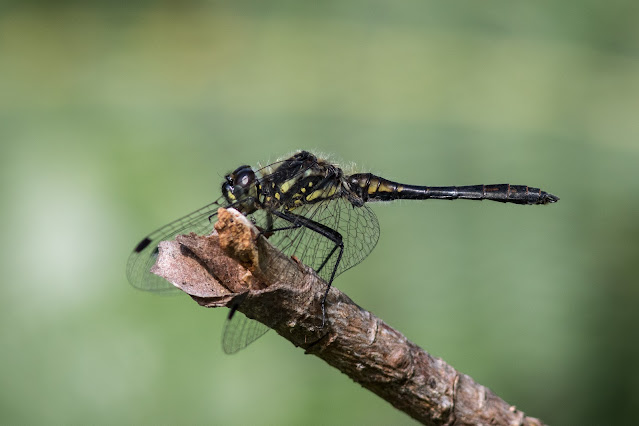
Black Darter
Over the last few seasons we have seen males on both ponds. This is a resident of upland acidic still waters so GNR is not typical habitat. This year there were several males for several weeks, probably dispersing from breeding sites in the hope of finding new territory.
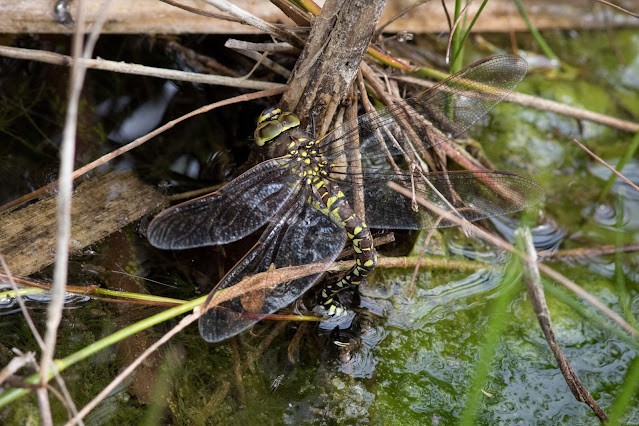
Common Hawker
This is another resident of upland acid still waters but has been quite at home in GNR over the past two seasons. This is a female ovipositing in the Meadow Pond.
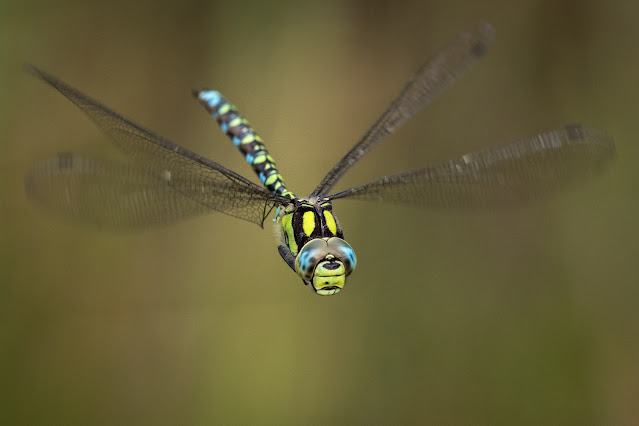
Southern Hawker
This is the most engaging dragonfly, with patrolling males regularly inspecting visitors at close quarters, as is this one in the photo.
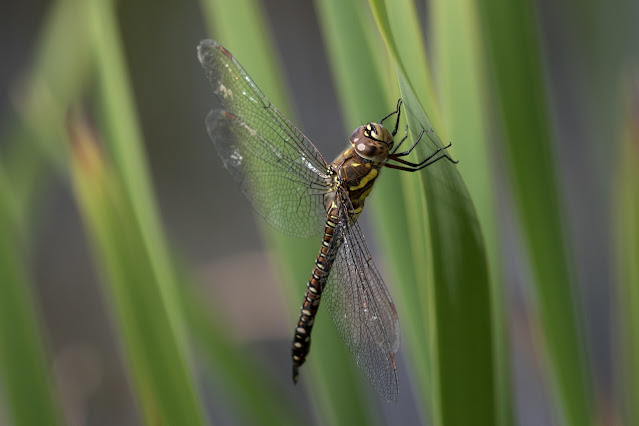
Migrant Hawker
This is the last dragonfly to appear, flying until November, and our most numerous hawker. Regularly seen in the reedbeds and over the lake as well as on the ponds. This is a female by the Heath Pond.
There’s plenty to look forward to next year. Perhaps more Willow Emerald Damselflies, the return of the Brown Hawker, or our first small Red-eyed Damselfly, Hairy Dragonfly, or Southern Migrant Hawker. Keep your eyes peeled next time you visit Gosforth Nature Reserve.